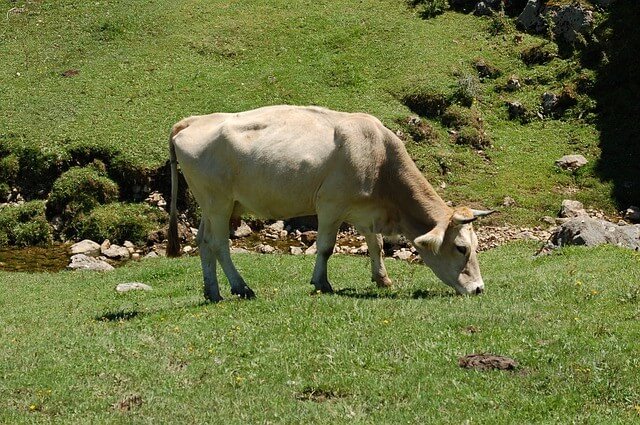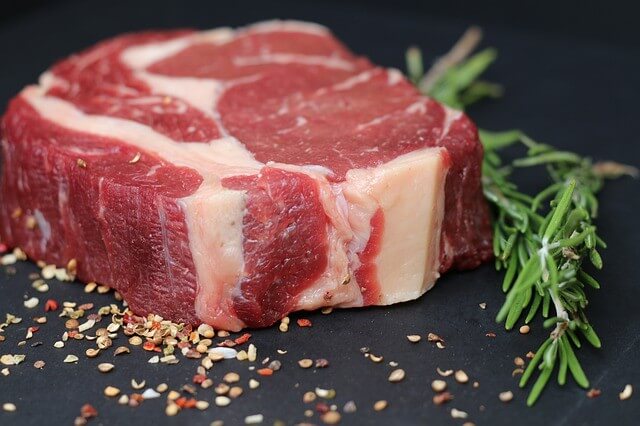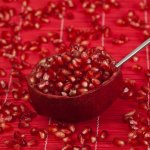
When I was a kid, my late aunt used to talk a lot about grass-fed meat. She would even start a fight if we bought meat other than grass-fed ones.
Her main argument was grass-fed meat is healthier as animals are allowed to graze in the pasture, breathe in the fresh air, bask in the sunlight, and above all, be stress-free.
These animals are grown in more humane conditions. As a result, the quality of meat is superior to conventional beef. Grass-fed meat contains more nutrients and is devoid of pathogens present in traditional meat.
It does not suffice to say she was adamant in her belief that she even started a small farm in a big plot of land that we owned. I still remember those good old days.
What is Grass-fed Meat?
Grass-fed meat is much leaner and higher in essential nutrients such as vitamins, antioxidants, and conjugated linoleic acid (CLA). Also, grass-fed meat has more omega 3 fatty acids than conventional meat. It is also less likely to contain bacteria that have become resistant to three or more classes of antibiotics.
Though grass-fed meat is excellent in all these aspects, it doesn’t have an official definition. The grass-fed label indicates that the sheep or cattle have been fed only their mother’s milk and had greens and grass throughout their lives. Also, they were free to roam in pastures during their growing-up years. However, the meat could also be from cattle who, relatively for only a short time, ate grass. If you want to be sure, go in for labels that say 100 percent grass-fed meat.
It’s possible to find meat that is both grass-fed and organic. The USDA requirements for organic meat include that animals should not be treated with antibiotics or hormones. They must be fed with organic, vegetarian foods and access the outdoors. But this type of meat tends to be a bit pricey.
Smoked meat
#TurkeySouthsideStyle
Smoking is an ancient slow cooking process used to preserve and add flavor to meat and is highly suitable for tough, fatty meat.
Nowadays, smoking meat is mainly done to add flavor. When wood burns, it breaks down and smells like vanilla, caramel, and other spices. Due to the intense heat, the outside of the meat forms a thick dark bark-like layer which adds crunchiness to the meat. Likewise, longer cooking times help turn tough meat tender.
Smoked meat is rich in iron, and the process avoids cooking with oils, fats, and sauces. Moreover, the fat from the meat drips out during the cooking process resulting in a healthier final product.
Smoked turkey breast will be ideal for holidays and special times like thanksgiving. Try Southside Market & Market’s smoked turkey breast. Its boneless Post Oak smoked, all-natural, super succulent, and forms an excellent main course. You can just heat and eat to enjoy a hassle-free celebration or gift it to someone you love.
Health Benefits of Grass-fed Meat

Eating red meat as a part of a healthy balanced diet is beneficial to your overall health.
Higher amounts of CLA
Your body doesn’t produce conjugated linoleic acid, so you must get it in your diet. CLA fights cancer, boosts your immunity, increases metabolism, and controls your cholesterol levels.
A study published in the journal Nutrition and Cancer says that women who consumed the highest levels of CLA in their food had a lower risk of breast cancer than their counterparts who consumed the lowest levels of CLA.
CLA helps you to lose weight because it increases your basal metabolic rate. Also, it maintains a favorable fat-muscle ratio. Cows that feed on grass have more CLA in their meat. A study that compared grass-fed and grain-fed cows found that CLA was higher in grass-fed cows.
Reduces the risk of heart attack
Grass-fed meat has two to four times higher omega 3 fatty acids than grain-fed meat. Omega 3 fatty acids are more heart-friendly. They help make hormones that regulate the heart, blood, and genetic function.
Also, grass-fed meat has less overall fat and unhealthy fat, a low level of dietary cholesterol, more CLA, and vitamin E.
Rich in carotenoids
Grass-fed meat has a rich yellow color and a superior flavor. The rich yellow color is due to carotenoids, which have beta carotene and lutein. These potent antioxidants fight cancer and heart disease.
Likely free from hormones and antibiotics
Grain-fed cows are given hormones to increase their weight and provide more meat. The animals are confined to smaller spaces, which increases the spread of disease.
So farmers use antibiotics to control it. Consuming meat that is exposed to a variety of antibiotics could increase the risk of antibiotic resistance in human beings. The hormones in grain-fed beef can also cause early puberty in kids.
On the other hand, organic and grass-fed meat is free from antibiotics or hormones. Choosing grass-fed beef over conventional beef reduces your risk of food poisoning as well as having fewer antibiotic-resistant bacteria.
Grass-fed meat is good for the environment.
Ruminant animals and grass-fed cows have a symbiotic relationship with the pastures they graze. Not only do they clear fields and encourage new plant growth, but they also build fertile soil with their nutrient-rich compostable manure.
How to Find Grass-fed Meat
If you’re unsure where to find grass-fed meat, contact a trusted local rancher and buy meat directly from them. Also, you can contact organic ranchers online, such as Snake River Farms, FarmFoods, Southside Market and Smoked Foods, and many other ranchers if you don’t have access to a local rancher near you. When purchasing grass-fed meat at your local supermarkets, look for the certification of the American Grassfed Association.
Healthier Ways to Eat Red Meat
Moderation is vital while eating red meat. The American Institute for Cancer Research suggests a link between red meat and colorectal cancer. To reduce the risk, consume red meat paired with nutrient-rich whole foods.
For example, wrap the red meat in romaine leaves and top it with red onion, tomato, and avocado. What’s more, you could even serve it with a healthy starch like baked sweet potato or black beans. Enjoying your grass-fed meat along with these kinds of good combos as a part of overall healthy eating practices is the cornerstone to wellbeing and disease prevention.
Eating natural foods is essential for a healthy life. Grasses and herbs are a more natural diet for ruminant animals than corn or soy. It’s your choice to eat what’s best for you.
This post contains affiliate links.













